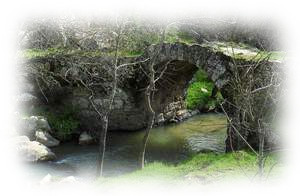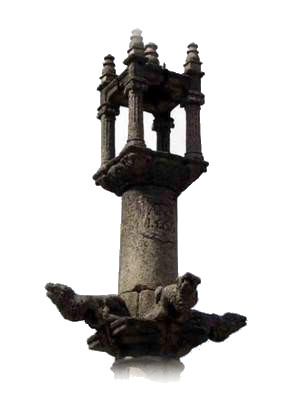HISTORY
Of the very loyal and faithful village of Almorox
This fragment of Lazarillo de Tormes (one English version) takes place in the village of Almorox, already referring to the generosity of its people and the great quality of its vine, from which magnificent wines are obtained.
There is no record to state when the town of Almorox was founded, but the remains of Roman culture (the bridge of the Barquillas) suggests that it dates from that time, having chroniclers who venture to fix such foundation in the Carpetania pre-romana.

The Roman domination was very brief, following a period of Celtiberian occupation, as demonstrated by some sarcophagi found in the place of "San Julián".
Due to the geographical situation of the area, the Arabs also passed by here dominating the town and belonging to the district of Alfamín. Samples of this period of Arab occupation are diverse toponyms, such as:
- The name of the villa "Almorox", formerly Almoroyo or Almoroyuelo, meaning "Los Prados" (The meadows)
- The brook of the Moro
- The source of Mora
- The Moor's Meadow
- Path of the Jews
- Valley of the Jews
By these last names, some chroniclers attribute the foundation of the town to the Israelites who fled from being taken captive by Nebuchadnezzar, or at least his passage through this region.
Initiated the reconquest by King Alfonso VI, the "Almoroxans" participated in the conquest of Toledo (May 25, 1085) and, for their courageous behavior, the village received the privilege of telling their inhabitants "free of chest" (not paying taxes).
The valorous behavior of the Almorojanos also made presence in the battle of the Navas de Tolosa (1212), reason why King Alfonso VIII granted the title of Loyal to the town. The Almohad presence was also noticed in the battle of Rio Salado (1341), being emphasized the courageous behavior of these by the chronicle of the reign of Alfonso XI.
When, in 1423, King Juan II yelded to Don Álvaro de Luna (his favorite) the town of Escalona (changing it to that of Alfaro), the town of Almorox was added as an annex to that dukedom, remaining there until 1566.
In 1566 Almorox obtained its independence from Escalona, in a lawsuit being the judge Juan Rodriguez de Mora and presented by:
- Escalona the Marquis Don Francisco Pacheco (Duke of Escalona)
- Almorox Juan González Testillano (mayor of the town) and the neighbors Antonio Bilbestre, Francisco López, Pedro Soriano and Francisco Sánchez,
On the occasion of this independence, mayors, aldermen, guards and necessary officials were granted the power to exercise civil and criminal jurisdiction high and low. The majestic pillory is erected as a symbol of this independence.

In 1588, during the reign of Felipe II, the town of Almorox won a lawsuit against the Council of the Mesta to be able to break the boundaries of the meadows.
In 1702 the town of Almorox was declared free of carring 40 fanegas of cooked bread to the court for distancing more than 10 leagues, having to create in exchange a pottery with a capacity of 647 fanegas of wheat (located in the present square of the Constitution, although there are no remains, the structure of its facade is preserved in the current buildings).
In the war of succession, the Almorojans also demonstrated their bravery in the conquest of Málaga and Granada (1719), thus obtaining for Almorox the title of "Faithful Villa", seconded by Felipe V.
The construction of the current Town Hall was completed in 1799, putting an end to the period in which the local meetings were held in the old hermitage of San Andrés "bell played", since in 1768 this hermitage became a parish house.
From July 28, 1901 to January 1966, a railway line was operating between Madrid and Almorox (translated by google).
On March 7, 1905, the town receives the visit of King Alfonso XIII, due to a failure in his car as he passed through the town, coinciding with this visit with the celebration of "Big Sunday" and the "Auction of the Branch". Being received the king by the local authorities and by the Brotherhood of the Souls or Soldadesca, that celebrated its great party. On March 8, a telegram from Queen Maria Cristina was received in the village, thanking the people for the treatment given to her son.